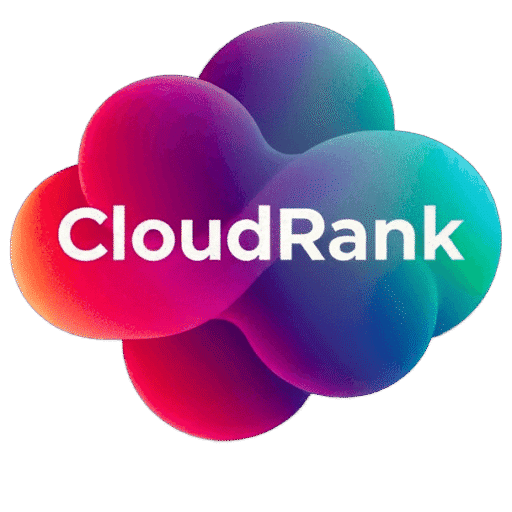In the ever-evolving landscape of cloud computing, the hybrid cloud model has emerged as a practical solution, combining the best of both public and private cloud environments. As organisations increasingly adopt this model, the challenge of managing costs while maintaining performance and scalability becomes paramount. This article delves into advanced strategies, tools, and best practices for effective hybrid cloud cost management, cloud cost optimisation, and cloud financial management.
Understanding Hybrid Cloud Cost Management
Hybrid cloud cost management is a multifaceted endeavour that involves the meticulous orchestration of financial resources across heterogeneous cloud environments. It requires a profound comprehension of cost structures, usage patterns, and the inherent complexities of hybrid architectures. To effectively navigate these challenges, organizations can benefit from a hybrid cloud management platforms overview, which provides insights into tools designed to streamline cost analysis and resource allocation. These platforms allow for real-time monitoring and forecasting, enabling businesses to optimize their spending while maximizing performance across different cloud environments. By leveraging advanced analytics, companies can make informed decisions that align with their financial goals and operational needs.
The Intricacies of Hybrid Cloud Architecture
The hybrid cloud paradigm presents unique cost management challenges.
The interconnectivity between on-premises infrastructure and public cloud services necessitates a sophisticated approach to resource allocation and financial governance. Each cloud environment has its own pricing model and billing structures, which can complicate cost calculations. Organisations must also consider the compliance and security implications of data residing in different environments.
To navigate these intricacies, organisations must establish a comprehensive framework for cost visibility and control. This involves not only technological solutions but also strategic planning and continuous assessment. By understanding the architecture, businesses can better align their strategies to ensure both performance and cost-effectiveness.
Key Considerations for Cost Management
- Workload Distribution: Strategically distribute workloads between public and private clouds to leverage cost advantages while maintaining operational requirements.
This involves analysing workload characteristics, such as latency sensitivity, compliance needs, and cost implications, to determine the optimal cloud environment for each workload. By doing so, organisations can maximise their return on investment and minimise unnecessary expenses. 2. Data Transfer Costs: Monitor and optimise data transfer between cloud environments to minimise costs, particularly when dealing with large datasets. High data transfer rates can lead to unexpected expenses, so it’s crucial to implement strategies such as data compression, caching, and efficient network routing to mitigate these costs. Additionally, understanding the pricing tiers for data transfer can help in budgeting and forecasting. 3. Resource Utilisation: Implement policies to optimise resource utilisation, ensuring that instances and services are right-sized for their workloads. Over-provisioning can lead to wasteful spending, while under-provisioning can impact performance.
Regular audits and utilisation assessments can help in adjusting resources dynamically to match demand, thus optimising costs. 4. Financial Accountability: Foster a culture of financial accountability by assigning cost ownership to respective departments or teams. This encourages responsible spending and ensures that each team has a vested interest in managing their cloud usage efficiently. By integrating financial metrics into performance evaluations, organisations can drive cost-conscious behaviour across the board.
Cost Monitoring and Reporting
Continuous monitoring and reporting are critical components of effective hybrid cloud cost management. Organisations should implement comprehensive monitoring tools that provide real-time insights into cloud usage and expenses. These tools can help identify cost anomalies, track spending trends, and facilitate informed decision-making.
Regular reporting ensures transparency and accountability, enabling stakeholders to understand and manage cloud costs effectively.
Policy Development and Enforcement
Developing and enforcing cost management policies is essential for maintaining control over hybrid cloud expenditures. Policies should cover aspects such as resource provisioning, usage limits, and cost allocation. By establishing clear guidelines and enforcing compliance, organisations can prevent cost overruns and ensure that cloud investments align with business objectives. Regular policy reviews and updates are necessary to adapt to changing business needs and technological advancements.
Advanced Strategies for Cloud Cost Optimisation
Effective cloud cost optimisation transcends mere cost-cutting; it involves a holistic approach to maximising value from cloud investments.
Here are advanced strategies to achieve this:
Utilising Automation for Cost Efficiency
Automation is a cornerstone of cloud cost optimisation. By automating routine tasks such as scaling, provisioning, and de-provisioning, organisations can significantly reduce wasteful spending and ensure that resources are only utilised when needed. Automation tools can be programmed to adjust resources dynamically, based on real-time demand, thereby minimising idle resources and optimising costs.
Moreover, automation can streamline complex workflows, reducing the need for manual intervention and allowing IT teams to focus on strategic initiatives. Automated cost management solutions can also generate alerts for potential overspending, enabling proactive measures to prevent budget overruns.
Case Study: Automated Scaling
Consider a retail company that employs automated scaling during seasonal peaks.
By automatically adjusting resources based on demand, the company efficiently manages costs whilst ensuring seamless customer experiences. During high-traffic periods, such as Black Friday, the automated system scales resources up to accommodate increased demand, preventing service disruptions.
Once the peak period subsides, the system scales down, reducing unnecessary expenditures on idle resources. This dynamic scaling approach not only enhances cost efficiency but also improves operational agility, allowing the company to adapt swiftly to changing market conditions.
Implementing FinOps for Financial Governance
FinOps, or Financial Operations, is a practice that integrates financial accountability into the cloud ecosystem. It emphasises collaboration between finance, engineering, and operations teams to make informed decisions regarding cloud spending.
FinOps practices involve creating a culture of financial awareness, where all stakeholders are educated on cloud costs and are empowered to optimise spending.
- Cost Allocation and Tagging: Implement a robust tagging strategy to allocate costs to specific projects, departments, or business units. This granular visibility helps in identifying cost drivers and facilitates accurate budgeting and forecasting. By tagging resources appropriately, organisations can attribute expenses to the right cost centres, promoting accountability.
- Continuous Monitoring and Reporting: Utilise advanced analytics tools to continuously monitor cloud spending and generate insightful reports for stakeholders. These tools can provide dashboards and visualisations that highlight spending patterns, potential savings opportunities, and areas for optimisation. Regular reporting ensures that all stakeholders are aligned on financial goals and can collaborate effectively to achieve cost efficiency.
Cross-Functional Collaboration: Foster collaboration between finance, IT, and business units to align cloud expenditure with organisational objectives. By breaking down silos and encouraging open communication, organisations can ensure that financial decisions are informed by technical insights and business priorities.
Capacity Planning and Forecasting
Capacity planning and forecasting are essential components of cloud cost optimisation. Organisations should develop models to predict future resource needs and associated costs based on historical usage data and business projections. By anticipating demand fluctuations, businesses can make informed decisions about resource provisioning, avoiding over-provisioning and under-provisioning scenarios.
Tools for Effective Hybrid Cloud Cost Management
To effectively manage hybrid cloud costs, organisations must leverage an array of sophisticated tools designed to provide comprehensive insights and control over cloud expenditures.
Cloud Cost Management Platforms
- CloudHealth by VMware: This platform offers robust cost management capabilities, including anomaly detection, budgeting, and forecasting. CloudHealth provides detailed visibility into cloud usage and costs, enabling organisations to identify cost-saving opportunities and optimise resource allocation.
- AWS Cost Explorer: A native AWS tool that provides detailed insights into AWS usage and costs, enabling precise cost allocation and optimisation. AWS Cost Explorer offers features such as cost forecasting, usage reports, and budget alerts, helping organisations manage their AWS spending effectively.
Google Cloud Platform (GCP) Cost Management Tools: GCP offers a suite of cost management tools, including cost breakdowns, budget tracking, and billing exports. These tools provide granular insights into GCP expenses, allowing organisations to optimise their cloud investments and align spending with business priorities.
AI-Driven Analytics
Incorporate AI-driven analytics to predict future cloud expenses and uncover patterns that may lead to cost savings. Machine learning algorithms can identify trends and anomalies, providing actionable insights for cost optimisation. AI-powered tools can also automate repetitive cost management tasks, freeing up resources for strategic initiatives.
AI-driven analytics can enhance decision-making by offering predictive models that account for various factors influencing cloud costs. By leveraging these insights, organisations can proactively address potential cost challenges and capitalise on savings opportunities.
Integration with Financial Systems
Integrating cloud cost management tools with existing financial systems can streamline cost tracking and reporting. This integration enables organisations to consolidate financial data, providing a holistic view of cloud expenditures across the enterprise. By aligning cloud costs with financial metrics, businesses can enhance transparency and accountability in cloud spending.
Customisable Dashboards and Reporting
Customisable dashboards and reporting features allow organisations to tailor cloud cost insights to their specific needs. By providing stakeholders with relevant and timely information, these tools facilitate informed decision-making and promote collaboration across teams. Custom reports can highlight key performance indicators and track progress towards cost management goals.
Best Practices for Sustainable Cloud Financial Management
Sustainable cloud financial management involves adopting best practices that ensure long-term cost efficiency and alignment with organisational goals.
Establishing a Cloud Centre of Excellence
A Cloud Centre of Excellence (CCoE) is a cross-functional team that drives cloud adoption and optimisation within an organisation. By centralising expertise and establishing governance frameworks, a CCoE can significantly enhance cloud cost management efforts. The CCoE serves as a hub for best practices, knowledge sharing, and continuous improvement in cloud strategies.
The CCoE should include representatives from finance, IT, and business units to ensure a comprehensive approach to cloud management. By fostering collaboration and promoting a culture of innovation, the CCoE can drive successful cloud initiatives and maximise the value of cloud investments.
Continuous Education and Training
Invest in ongoing education and training for your teams to stay up to speed with the latest cloud technologies and cost management techniques. This enables them to make informed decisions and implement best practices effectively. Training programmes should cover topics such as cloud architecture, cost optimisation strategies, and financial governance.
By encouraging continuous learning, organisations can build a skilled workforce capable of navigating the complexities of hybrid cloud environments. Regular workshops, webinars, and certification programmes can help keep teams updated on industry trends and emerging technologies.
Regular Cost Reviews and Optimisation Workshops
Conduct regular cost reviews and workshops to identify areas for optimisation and share best practices across teams. Encourage a culture of continuous improvement and innovation in cloud cost management.
These reviews should involve cross-departmental teams to gain diverse perspectives and uncover hidden cost-saving opportunities.
Workshops can serve as forums for brainstorming and collaboration, allowing teams to exchange ideas and develop innovative solutions for cost challenges. By fostering a proactive approach to cost management, organisations can achieve sustainable financial performance in their cloud operations.
Governance and Compliance
Establishing robust governance and compliance frameworks is essential for sustainable cloud financial management. Organisations should develop policies and procedures to ensure compliance with industry regulations and internal standards. By implementing governance frameworks, businesses can mitigate risks and enhance control over cloud expenditures.
Regular audits and compliance checks are necessary to verify adherence to established policies and identify areas for improvement.
By maintaining a robust governance structure, organisations can ensure that cloud investments align with business objectives and regulatory requirements.
Vendor Management and Negotiation
Effective vendor management and negotiation are crucial for optimising cloud costs. Organisations should engage in regular negotiations with cloud service providers to secure favourable pricing and contract terms. By maintaining strong vendor relationships and leveraging purchasing power, businesses can achieve cost savings and enhance value from cloud partnerships.
The Role of Hybrid Cloud in Modern Enterprises
The hybrid cloud model empowers enterprises to achieve unparalleled flexibility, scalability, and cost efficiency. By employing the right strategies, tools, and best practices, organisations can harness the full potential of hybrid cloud environments.
Flexibility and Scalability
Hybrid cloud environments offer the flexibility to run workloads in the most suitable setting, whether on-premises or in the cloud. This flexibility allows organisations to scale resources up or down based on demand, ensuring optimal performance and cost efficiency. By leveraging both public and private clouds, businesses can adapt to changing market conditions and drive innovation.
Cost Efficiency and Optimisation
The hybrid cloud model enables organisations to optimise costs by strategically distributing workloads and resources. By leveraging cost-effective cloud services and maintaining critical workloads on-premises, businesses can achieve significant cost savings. The ability to choose the most cost-effective environment for each workload enhances financial performance and maximises return on investment.
Enhanced Security and Compliance
Hybrid cloud environments offer enhanced security and compliance capabilities, allowing organisations to meet regulatory requirements and protect sensitive data. By maintaining control over critical workloads on-premises, businesses can address security concerns and ensure data privacy. The hybrid model also provides the flexibility to implement security measures across both public and private clouds.
Innovation and Agility
Hybrid cloud environments foster innovation and agility by enabling organisations to experiment with new technologies and rapidly deploy applications. By providing a platform for continuous development and testing, the hybrid model supports digital transformation initiatives and accelerates time to market. Businesses can leverage cloud services to drive innovation and gain a competitive edge in the market.
Conclusion
In conclusion, mastering hybrid cloud cost management is essential for organisations aiming to maximise the value of their cloud investments. By understanding the intricacies of hybrid architectures, leveraging advanced strategies and tools, and adhering to best practices, enterprises can achieve sustainable cost efficiency and drive business success in the digital age. As the cloud landscape continues to evolve, staying informed and agile in cloud financial management will be key to maintaining a competitive edge.
Organisations must continuously assess their cloud strategies, adapt to emerging technologies, and embrace a culture of innovation to remain competitive. By prioritising cost management and aligning cloud investments with business objectives, enterprises can unlock the full potential of hybrid cloud environments and achieve long-term success.




